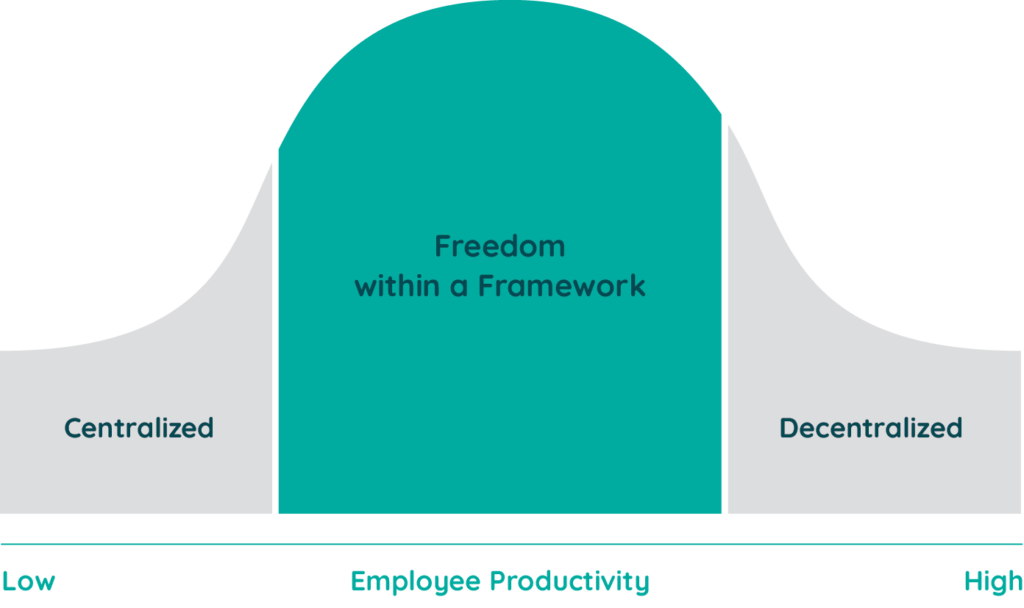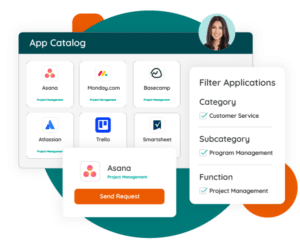
How SaaS Application Access Improves Employee Effectiveness
Table of Contents ToggleEffective Onboarding Improves New-hire RetentionVisibility of SaaS the...
Back
Back
Search for Keywords...
Blog

Table of Contents
COVID forever disrupted the way we work — and if there’s a silver lining to the pandemic, it’s led to an unprecedented level of workplace flexibility. And there’s no question, employees love it.
This growing desire for employee flexibility remained a popular topic at Zylo’s 2021 SaaSMe event, which focused on the dynamics impacting the new digital workplace.
“Employees continue to have a strong preference for this flexibility. We saw 76% of global knowledge workers want flexibility in where they work,” says Helen Kupp, Head of Product Strategy & Partnerships at Future Forum (Slack), and SaaSMe speaker. “More importantly, we’re finding employees are going to vote with their feet—in terms of what they want from their employers. The same study showed flexibility ranks second only to compensation when it comes to job satisfaction.”
As employees increasingly become untethered to the physical office space or geographical location, rapid transformation is simultaneously impacting the software industry, with cloud-based applications soon expected to account for a majority of all software.
The low cost and ease of acquisition of SaaS also changes the way businesses acquire software. Today, employees and teams increasingly purchase software, not IT or procurement. In fact, Gartner predicts that by 2023, 40% of workers will choose business applications and tools, just like they do their music streaming experience.
As your employees increasingly take ownership of choosing their SaaS tools, you can’t overlook the need to ensure your organization’s SaaS applications remain effective, approved, secure, and cost-effective.
To balance employee flexibility—and order, many organizations turn to a proven leadership strategy known as freedom within a framework.
In simple terms, freedom within a framework means putting guardrails in place, and then trusting employees to make the best decisions for your organization.
Think of the concept like a competitive cooking show, where the judges stipulate which ingredients the contestants can use, but allow them to choose their favorites to create their best dish.
Freedom within a framework offers several tangible benefits, it’s not just the latest buzzword in HR. When you allow employees to use the business applications they know and love, it boosts employee effectiveness, productivity, and satisfaction. There’s also hard data showing higher utilization rates for employee-led SaaS purchases, according to user data from our SaaS Management Index.
Of course, you don’t want to hand over your company credit card without first establishing guidelines. Let’s take a look at how to implement freedom with a framework as part of a larger SaaS Management strategy.

IT teams need to navigate the fine line between giving employees freedom to choose their preferred applications, while also preventing redundant tools and keeping costs in check.
Manual processes like updating spreadsheets or asking employees to self-report SaaS purchases rarely work and quickly become outdated. Instead, consider using a SaaS Management platform to simultaneously manage SaaS sprawl and enhance the employee experience. Here’s how.
To begin, you need a clear understanding of every tool in your arsenal, regardless if it’s managed by IT or purchased by individual employees. Use the opportunity to vet any unvetted applications and eliminate tools that appear problematic. Also, consider removing apps tied solely to departed headcount.
 Your baseline discovery will most certainly uncover redundant SaaS applications, potentially dozens. To nip the problem in the bud moving forward, establish a centralized review and approval process to govern new SaaS purchases. It will vary depending on your organization, as some businesses use a single IT manager, while others employ a full review board composed of representatives from across the organization.
Your baseline discovery will most certainly uncover redundant SaaS applications, potentially dozens. To nip the problem in the bud moving forward, establish a centralized review and approval process to govern new SaaS purchases. It will vary depending on your organization, as some businesses use a single IT manager, while others employ a full review board composed of representatives from across the organization.
Ultimately, you want to cross-check the new application against the tools already in use, ensure compliance, and reduce risk. This is your “framework.” Now, we can move on to the fun part.
Once you rationalize your existing SaaS and establish an official curation and vetting process, move these applications to your designated App Catalog, where employees can easily discover and self-select their preferred tools. It not only raises awareness about your full SaaS inventory, it also eliminates shadow IT since employees know they can pull from a library of approved applications.
Evolving Your SaaS Governance Framework for the Digital Workplace
Learn MoreThe future of work is digital, and today’s leaders must adjust course to meet employees where they’re at, notably by giving them skin in the game when it comes to choosing the best SaaS tools to support their roles.
To learn more about the latest insights in SaaS and emerging trends in digital transformation, download Zylo’s SaaS Management Index.

Table of Contents ToggleEffective Onboarding Improves New-hire RetentionVisibility of SaaS the...

Table of Contents ToggleWhy Is SaaS Onboarding Important for New Hires?5...

Table of Contents ToggleShadow IT Is the New NormEmbrace Shadow ITConvert...

Table of Contents ToggleWhat Is Freedom within a Framework?Implementing Freedom within...
| Cookie | Duration | Description |
|---|---|---|
| cookielawinfo-checkbox-analytics | 11 months | This cookie is set by GDPR Cookie Consent plugin. The cookie is used to store the user consent for the cookies in the category "Analytics". |
| cookielawinfo-checkbox-functional | 11 months | The cookie is set by GDPR cookie consent to record the user consent for the cookies in the category "Functional". |
| cookielawinfo-checkbox-necessary | 11 months | This cookie is set by GDPR Cookie Consent plugin. The cookies is used to store the user consent for the cookies in the category "Necessary". |
| cookielawinfo-checkbox-others | 11 months | This cookie is set by GDPR Cookie Consent plugin. The cookie is used to store the user consent for the cookies in the category "Other. |
| cookielawinfo-checkbox-performance | 11 months | This cookie is set by GDPR Cookie Consent plugin. The cookie is used to store the user consent for the cookies in the category "Performance". |
| viewed_cookie_policy | 11 months | The cookie is set by the GDPR Cookie Consent plugin and is used to store whether or not user has consented to the use of cookies. It does not store any personal data. |
